Abstract
1. We tested predictions of a mathematical formulation of a hypothesis of dynamic control of coronary blood flow by tissue oxygen tension. 2. The rate of change of adjustment of the coronary circulation to a step change in arterial perfusion was analysed in the cannulated main stem preparation of the anaesthetized goat. The variable studied was the ratio between driving pressure and coronary flow, each averaged per heart beat. The response of this ratio was measured following a sudden change in perfusion pressure with constant-pressure perfusion and a sudden change in flow with constant-flow perfusion. 3. The rate of change of the pressure-flow ratio was quantified by t50, the time required to establish half of the completed response. For a pressure decrease t50 was 4.9 +/- 0.2 s (n = 35) (mean +/- S.E.M., n = number of individual measurements), 11.3 +/- 1.2 s (n = 25) for a flow decrease, 14.5 +/- 1.6 (n = 34) for a pressure increase and 25.1 +/- 2.3 (n = 19) for a flow increase. 4. No effect of the level of flow or pressure on t50 was found for a decrease in perfusion. Furthermore, with a flow increase, the t50 value did not depend on the level of flow, which is in agreement with the outcome of earlier experiments where the response to a change in heart rate was measured. With a pressure increase, the mean t50 value of the pressure-flow ratio was lower at high perfusion pressure but the difference with low perfusion pressure was not significant (P = 0.11). 5. The t50 value in the cases of an increase in pressure and flow are similar to those found for a change of heart rate in an earlier study. 6. Unlike step changes of metabolic rate, some of the measured responses to mechanical step changes were not predicted by the oxygen hypothesis. It is suggested that the increased rate of coronary adjustment induced by the reduction of coronary perfusion is due to arteriolar smooth muscle mechanics which apparently differ in strength depending on the direction of change of the arteriolar dimensions. 7. This suggestion is strengthened by the results of experiments in which smooth muscle responses were abolished with adenosine.
Full text
PDF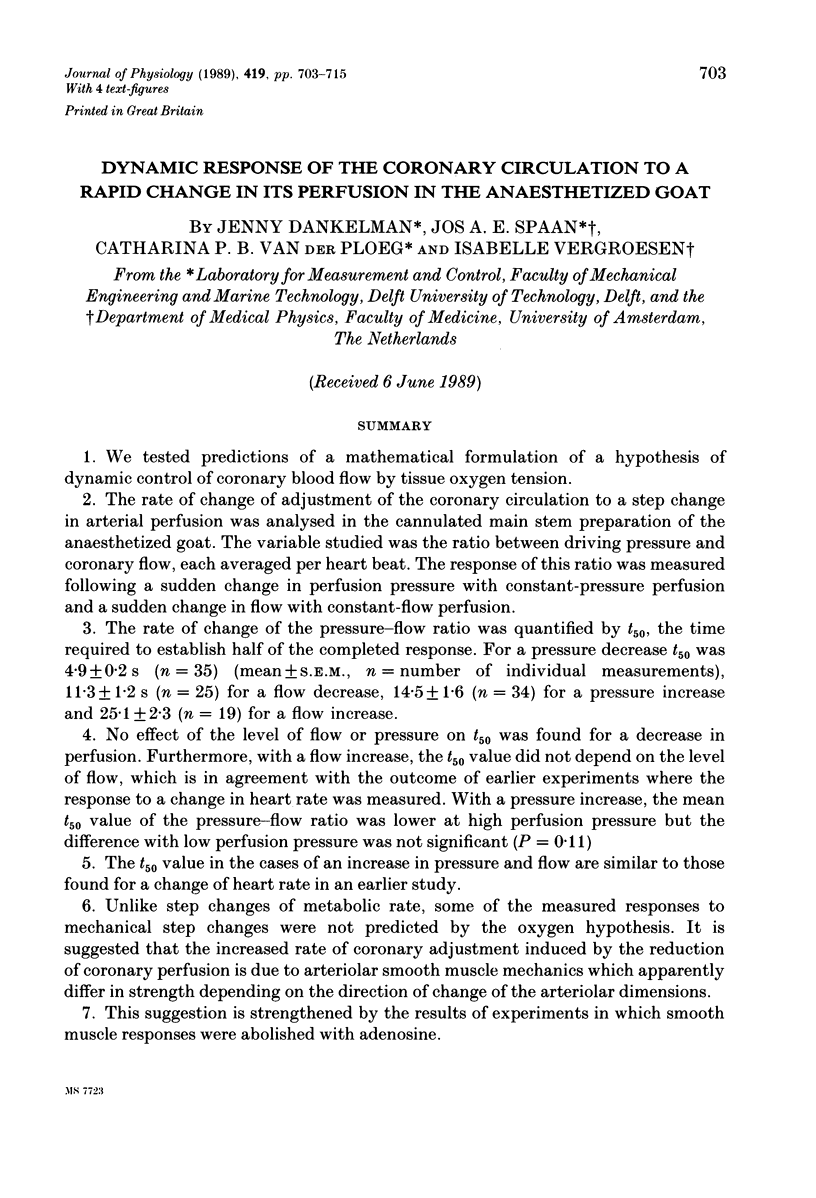

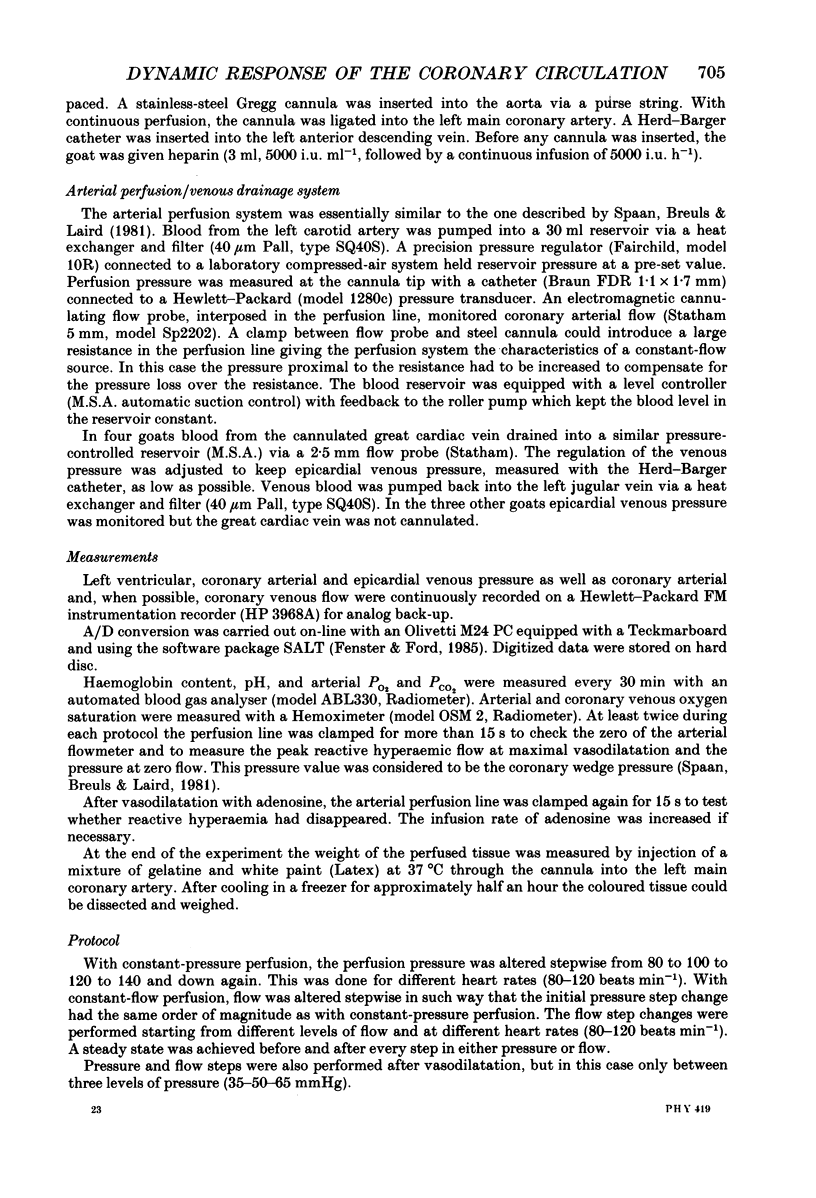

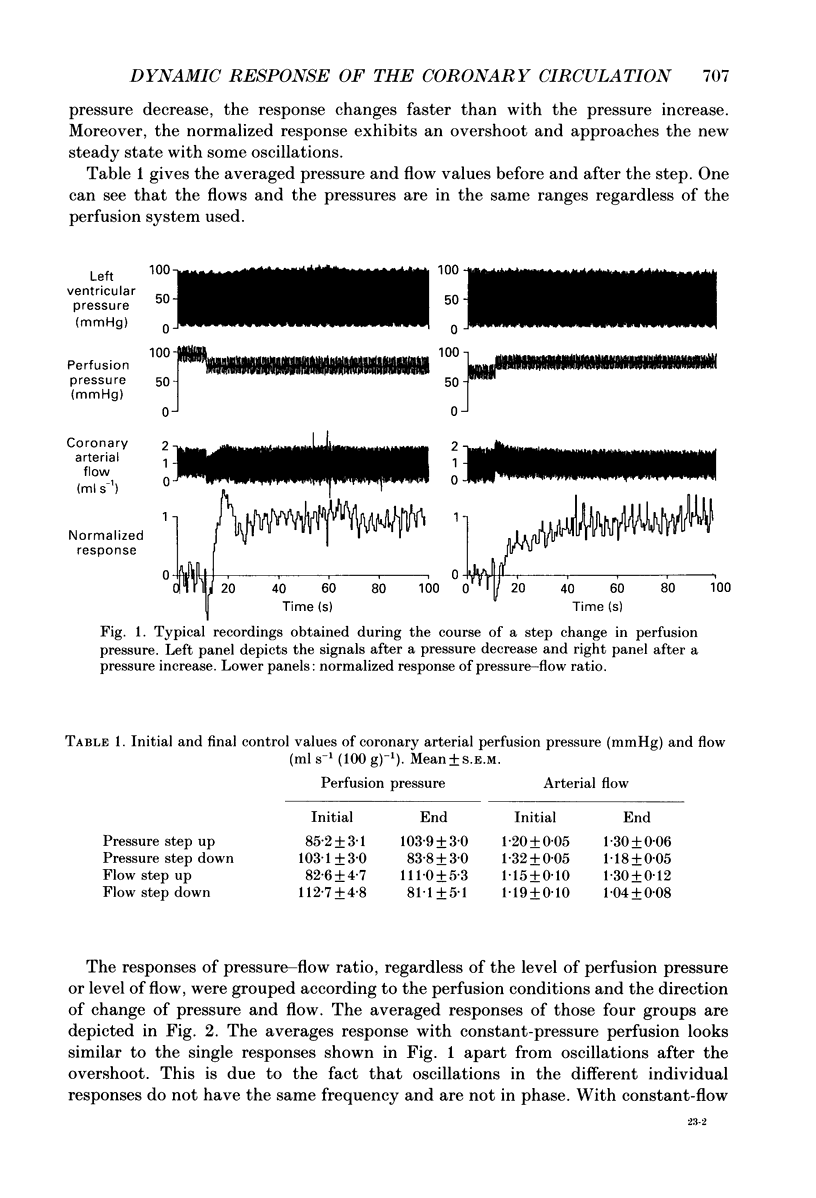
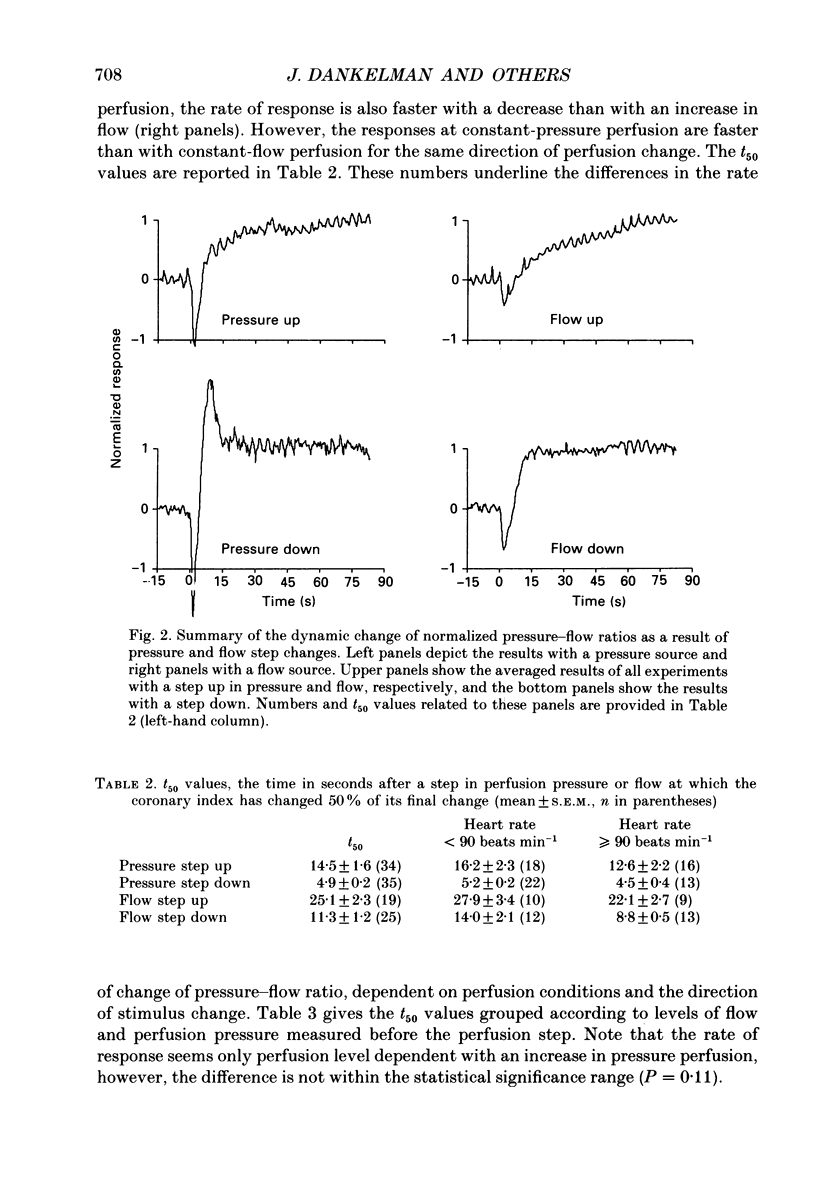
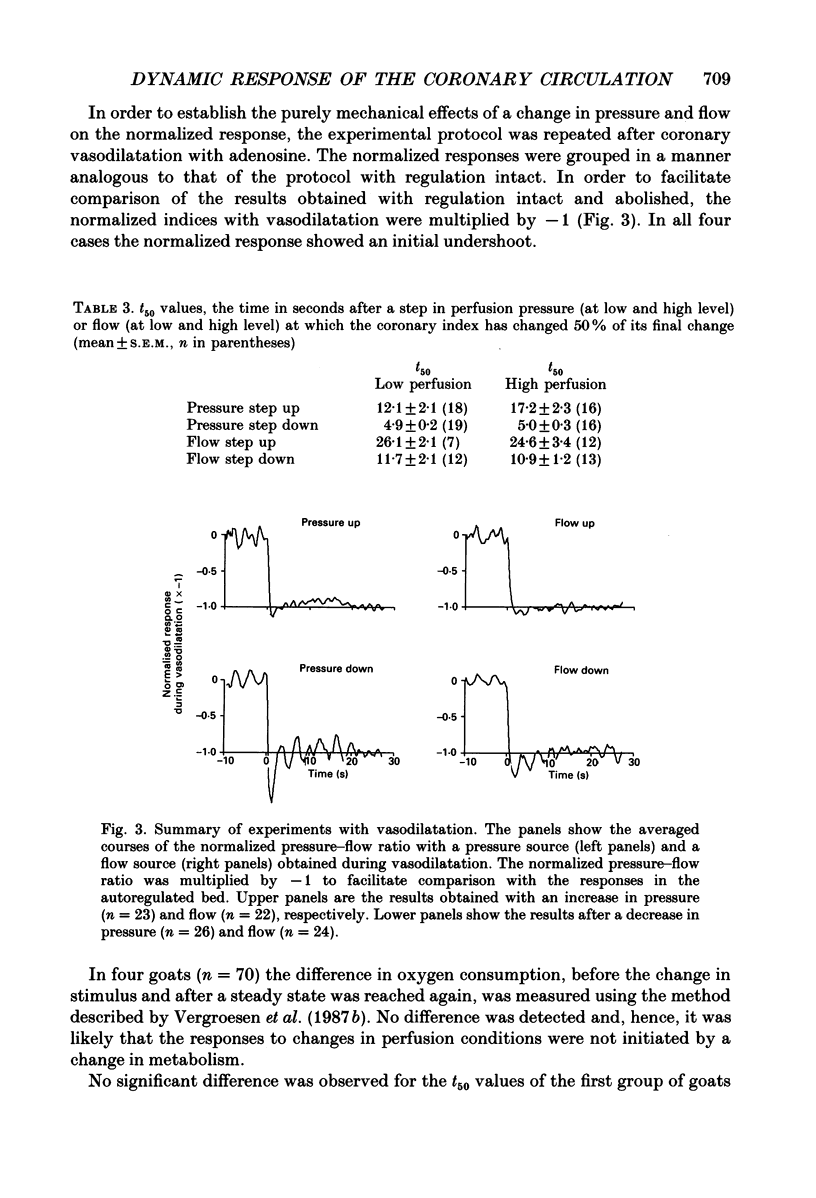
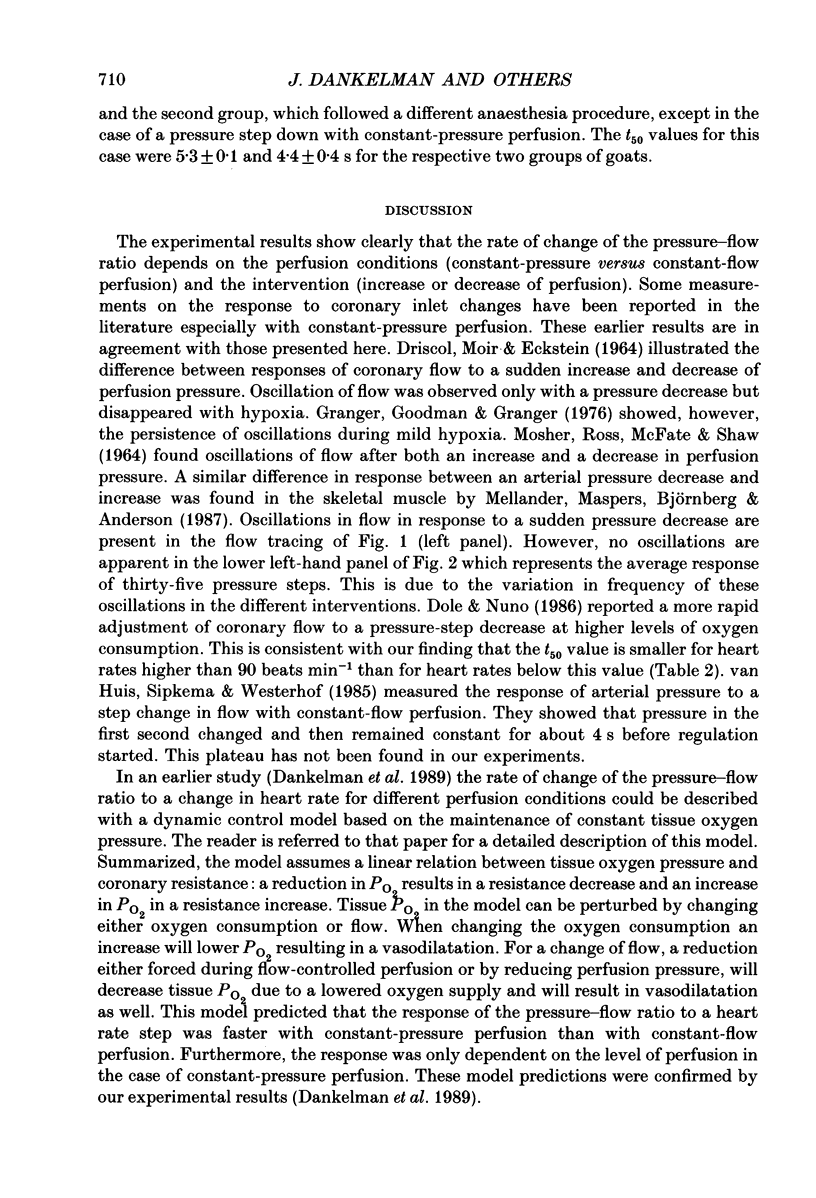
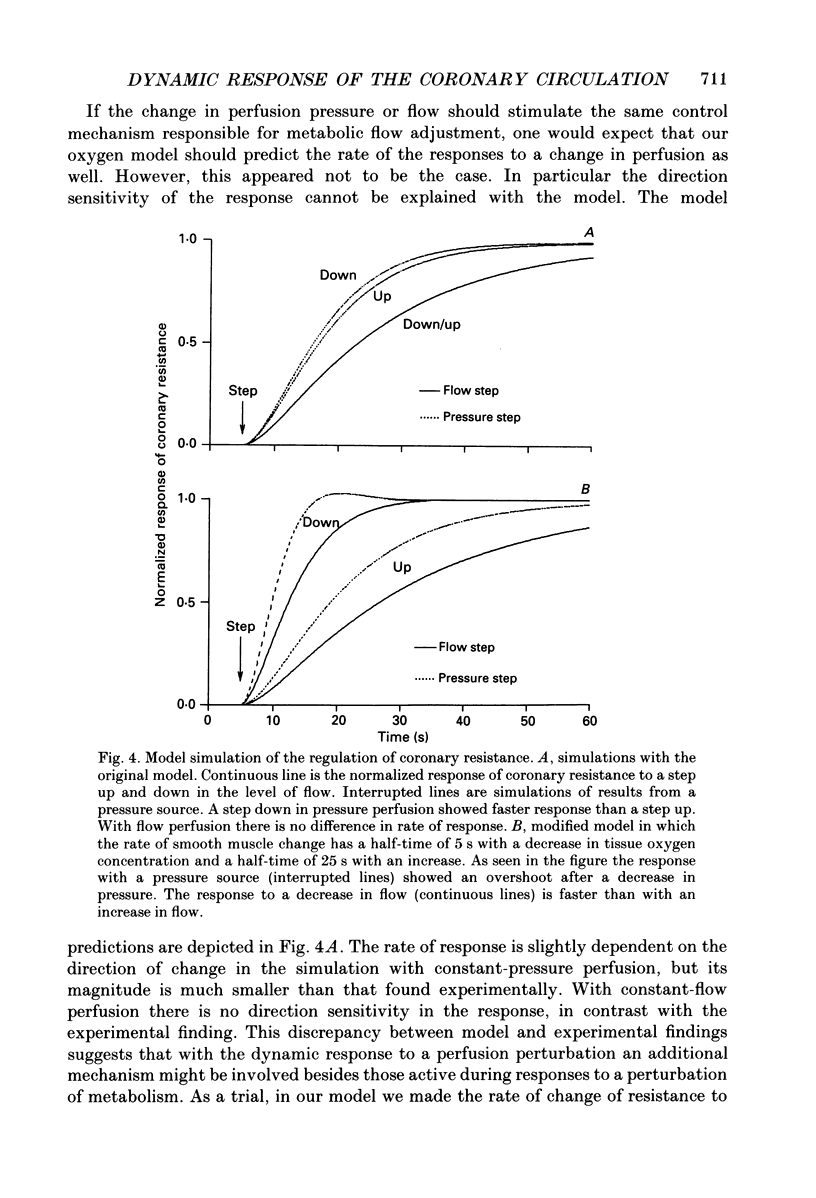
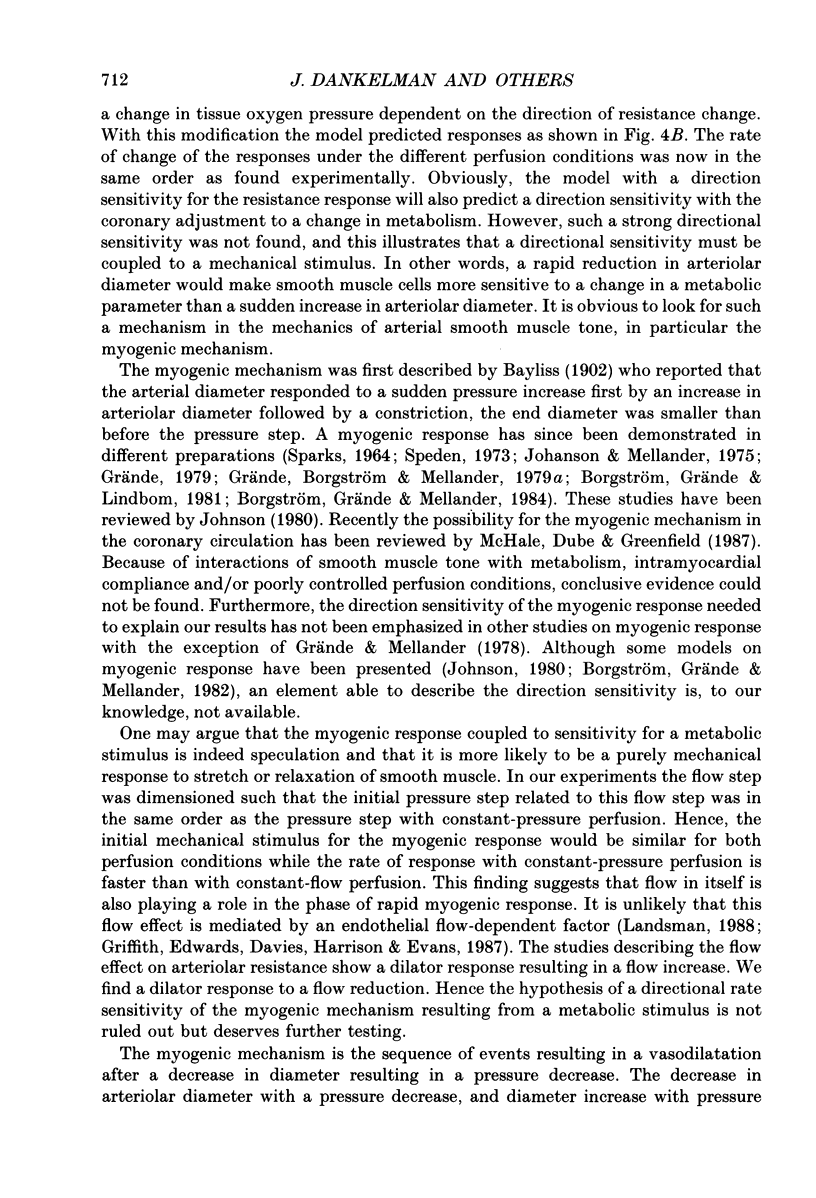
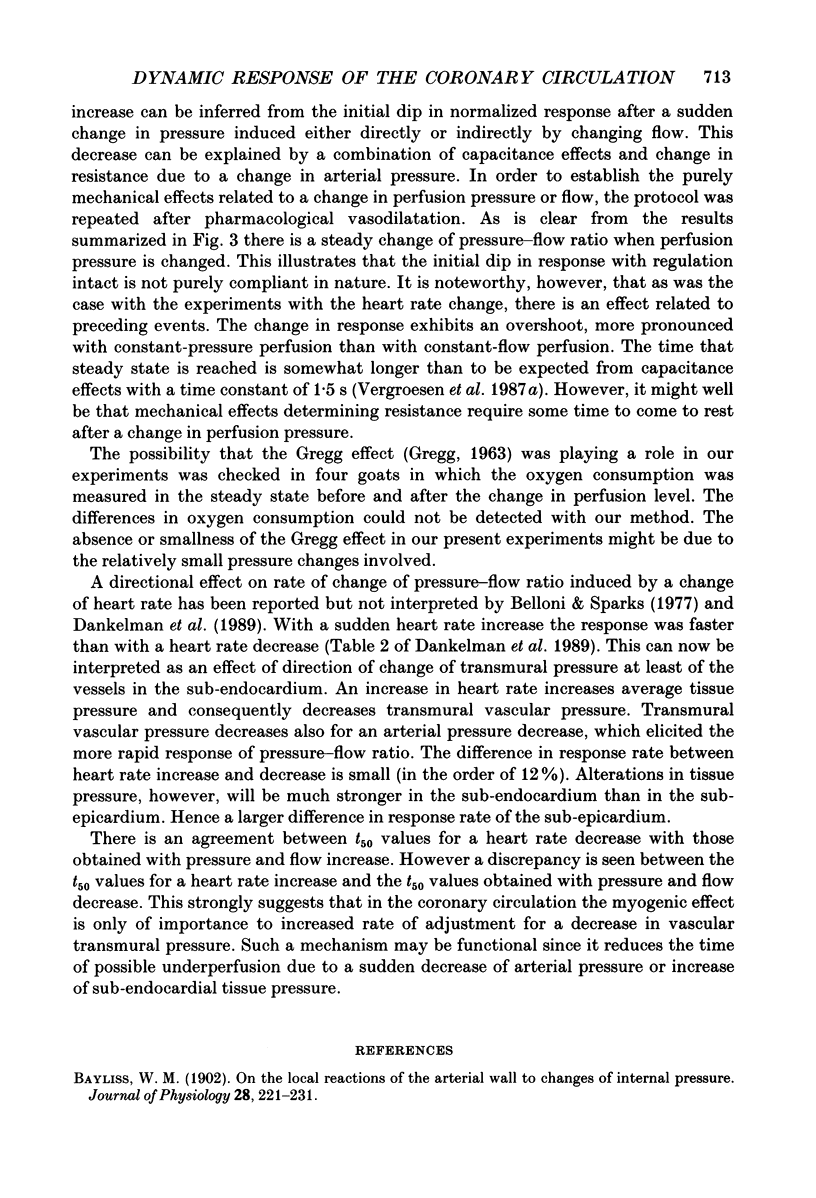
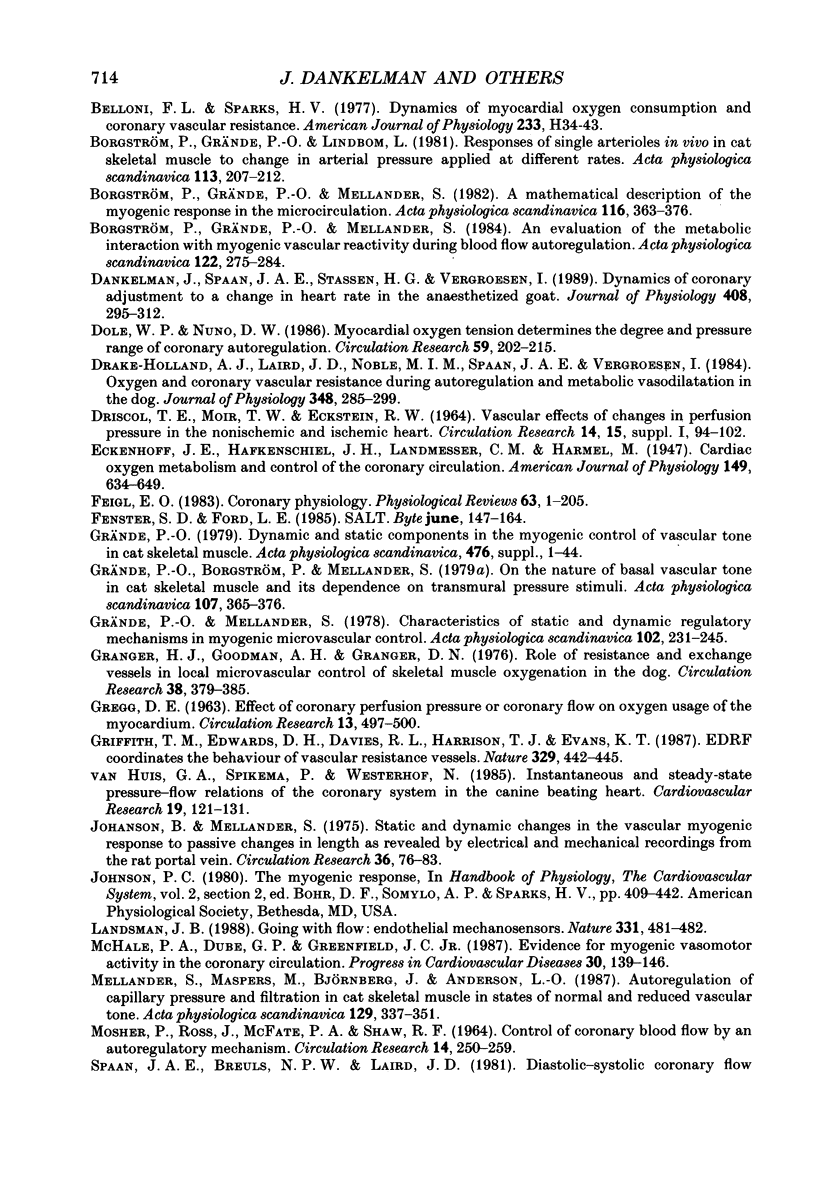
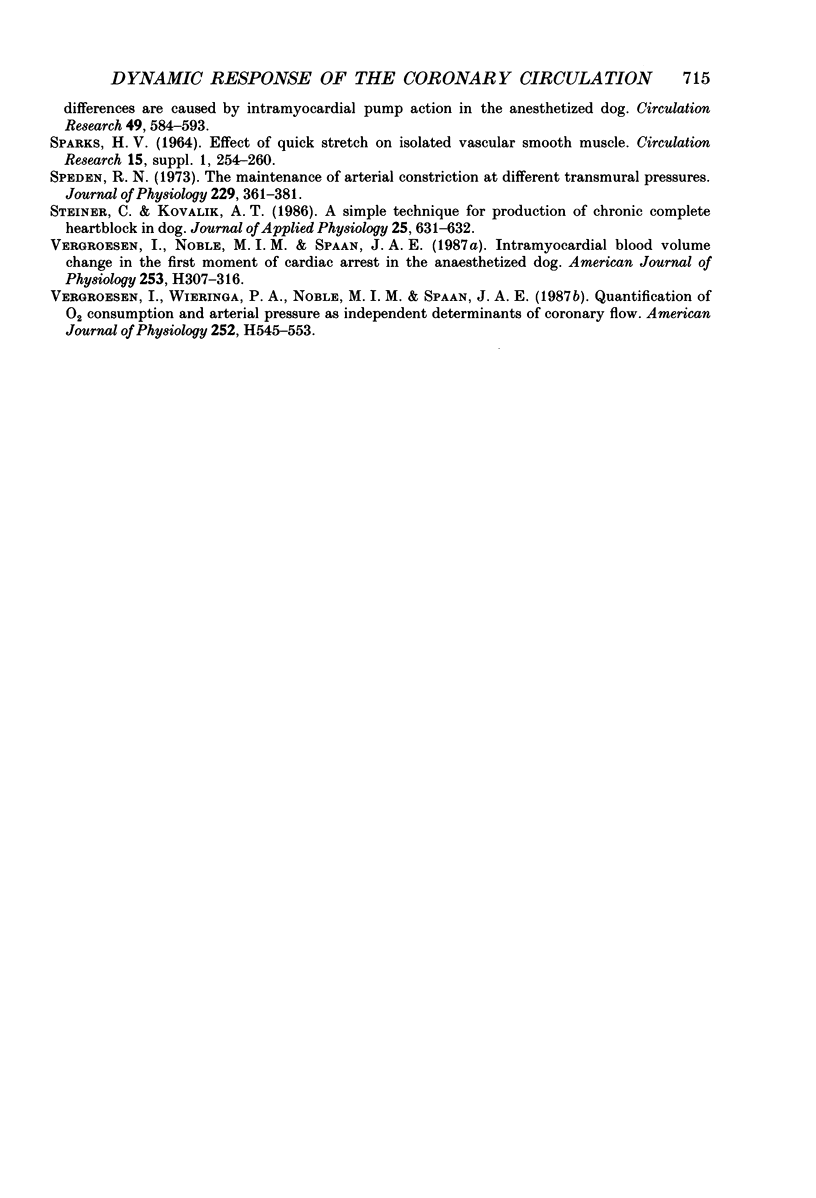
Selected References
These references are in PubMed. This may not be the complete list of references from this article.
- Bayliss W. M. On the local reactions of the arterial wall to changes of internal pressure. J Physiol. 1902 May 28;28(3):220–231. doi: 10.1113/jphysiol.1902.sp000911. [DOI] [PMC free article] [PubMed] [Google Scholar]
- Belloni F. L., Sparks H. V. Dynamics of myocardial oxygen consumption and coronary vascular resistance. Am J Physiol. 1977 Jul;233(1):H34–H43. doi: 10.1152/ajpheart.1977.233.1.H34. [DOI] [PubMed] [Google Scholar]
- Borgström P., Grände P. O., Lindbom L. Responses of single arterioles in vivo in cat skeletal muscle to change in arterial pressure applied at different rates. Acta Physiol Scand. 1981 Oct;113(2):207–212. doi: 10.1111/j.1748-1716.1981.tb06884.x. [DOI] [PubMed] [Google Scholar]
- Borgström P., Grände P. O., Mellander S. A mathematical description of the myogenic response in the microcirculation. Acta Physiol Scand. 1982 Dec;116(4):363–376. doi: 10.1111/j.1748-1716.1982.tb07154.x. [DOI] [PubMed] [Google Scholar]
- Borgström P., Grände P. O., Mellander S. An evaluation of the metabolic interaction with myogenic vascular reactivity during blood flow autoregulation. Acta Physiol Scand. 1984 Nov;122(3):275–284. doi: 10.1111/j.1748-1716.1984.tb07511.x. [DOI] [PubMed] [Google Scholar]
- Dankelman J., Spaan J. A., Stassen H. G., Vergroesen I. Dynamics of coronary adjustment to a change in heart rate in the anaesthetized goat. J Physiol. 1989 Jan;408:295–312. doi: 10.1113/jphysiol.1989.sp017460. [DOI] [PMC free article] [PubMed] [Google Scholar]
- Dole W. P., Nuno D. W. Myocardial oxygen tension determines the degree and pressure range of coronary autoregulation. Circ Res. 1986 Aug;59(2):202–215. doi: 10.1161/01.res.59.2.202. [DOI] [PubMed] [Google Scholar]
- Drake-Holland A. J., Laird J. D., Noble M. I., Spaan J. A., Vergroesen I. Oxygen and coronary vascular resistance during autoregulation and metabolic vasodilation in the dog. J Physiol. 1984 Mar;348:285–299. doi: 10.1113/jphysiol.1984.sp015110. [DOI] [PMC free article] [PubMed] [Google Scholar]
- Feigl E. O. Coronary physiology. Physiol Rev. 1983 Jan;63(1):1–205. doi: 10.1152/physrev.1983.63.1.1. [DOI] [PubMed] [Google Scholar]
- GREGG D. E. EFFECT OF CORONARY PERFUSION PRESSURE OR CORONARY FLOW ON OXYGEN USAGE OF THE MYOCARDIUM. Circ Res. 1963 Dec;13:497–500. doi: 10.1161/01.res.13.6.497. [DOI] [PubMed] [Google Scholar]
- Granger H. J., Goodman A. H., Granger D. N. Role of resistance and exchange vessels in local microvascular control of skeletal muscle oxygenation in the dog. Circ Res. 1976 May;38(5):379–385. doi: 10.1161/01.res.38.5.379. [DOI] [PubMed] [Google Scholar]
- Griffith T. M., Edwards D. H., Davies R. L., Harrison T. J., Evans K. T. EDRF coordinates the behaviour of vascular resistance vessels. Nature. 1987 Oct 1;329(6138):442–445. doi: 10.1038/329442a0. [DOI] [PubMed] [Google Scholar]
- Grände P. O., Borgström P., Mellander S. On the nature of basal vascular tone in cat skeletal muscle and its dependence on transmural pressure stimuli. Acta Physiol Scand. 1979 Dec;107(4):365–376. doi: 10.1111/j.1748-1716.1979.tb06487.x. [DOI] [PubMed] [Google Scholar]
- Grände P. O. Dynamic and static components in the myogenic control of vascular tone in cat skeletal muscle. Acta Physiol Scand Suppl. 1979;476:1–44. [PubMed] [Google Scholar]
- Grände P. O., Mellander S. Characteristics of static and dynamic regulatory mechanisms in myogenic microvascular control. Acta Physiol Scand. 1978 Feb;102(2):231–245. doi: 10.1111/j.1748-1716.1978.tb06067.x. [DOI] [PubMed] [Google Scholar]
- Johansson B., Mellander S. Static and dynamic components in the vascular myogenic response to passive changes in length as revealed by electrical and mechanical recordings from the rat portal vein. Circ Res. 1975 Jan;36(1):76–83. doi: 10.1161/01.res.36.1.76. [DOI] [PubMed] [Google Scholar]
- Lansman J. B. Endothelial mechanosensors. Going with the flow. Nature. 1988 Feb 11;331(6156):481–482. doi: 10.1038/331481a0. [DOI] [PubMed] [Google Scholar]
- MOSHER P., ROSS J., Jr, MCFATE P. A., SHAW R. F. CONTROL OF CORONARY BLOOD FLOW BY AN AUTOREGULATORY MECHANISM. Circ Res. 1964 Mar;14:250–259. doi: 10.1161/01.res.14.3.250. [DOI] [PubMed] [Google Scholar]
- McHale P. A., Dubé G. P., Greenfield J. C., Jr Evidence for myogenic vasomotor activity in the coronary circulation. Prog Cardiovasc Dis. 1987 Sep-Oct;30(2):139–146. doi: 10.1016/0033-0620(87)90006-5. [DOI] [PubMed] [Google Scholar]
- Mellander S., Maspers M., Björnberg J., Andersson L. O. Autoregulation of capillary pressure and filtration in cat skeletal muscle in states of normal and reduced vascular tone. Acta Physiol Scand. 1987 Mar;129(3):337–351. doi: 10.1111/j.1748-1716.1987.tb08077.x. [DOI] [PubMed] [Google Scholar]
- SPARKS H. V., Jr EFFECT OF QUICK STRETCH ON ISOLATED VASCULAR SMOOTH MUSCLE. Circ Res. 1964 Aug;15:SUPPL–SUPPL:260. [PubMed] [Google Scholar]
- Spaan J. A., Breuls N. P., Laird J. D. Diastolic-systolic coronary flow differences are caused by intramyocardial pump action in the anesthetized dog. Circ Res. 1981 Sep;49(3):584–593. doi: 10.1161/01.res.49.3.584. [DOI] [PubMed] [Google Scholar]
- Speden R. N. The maintenance of arterial constriction at different transmural pressures. J Physiol. 1973 Mar;229(2):361–381. doi: 10.1113/jphysiol.1973.sp010143. [DOI] [PMC free article] [PubMed] [Google Scholar]
- Steiner C., Kovalik A. T. A simple technique for production of chronic complete heart block in dogs. J Appl Physiol. 1968 Nov;25(5):631–632. doi: 10.1152/jappl.1968.25.5.631. [DOI] [PubMed] [Google Scholar]
- Vergroesen I., Noble M. I., Spaan J. A. Intramyocardial blood volume change in first moments of cardiac arrest in anesthetized goats. Am J Physiol. 1987 Aug;253(2 Pt 2):H307–H316. doi: 10.1152/ajpheart.1987.253.2.H307. [DOI] [PubMed] [Google Scholar]
- Vergroesen I., Noble M. I., Wieringa P. A., Spaan J. A. Quantification of O2 consumption and arterial pressure as independent determinants of coronary flow. Am J Physiol. 1987 Mar;252(3 Pt 2):H545–H553. doi: 10.1152/ajpheart.1987.252.3.H545. [DOI] [PubMed] [Google Scholar]
- van Huis G. A., Sipkema P., Westerhof N. Instantaneous and steady-state pressure-flow relations of the coronary system in the canine beating heart. Cardiovasc Res. 1985 Mar;19(3):121–131. doi: 10.1093/cvr/19.3.121. [DOI] [PubMed] [Google Scholar]


